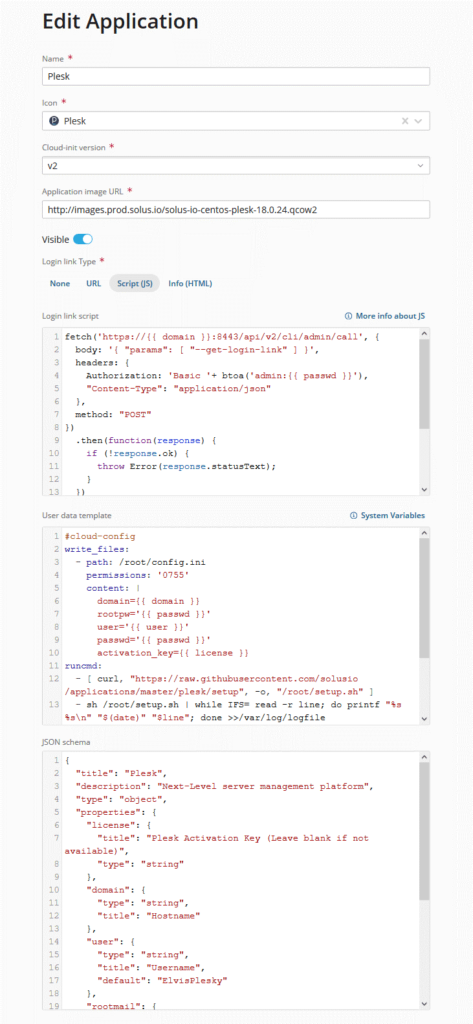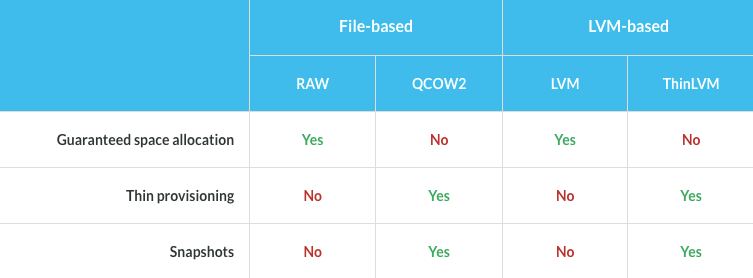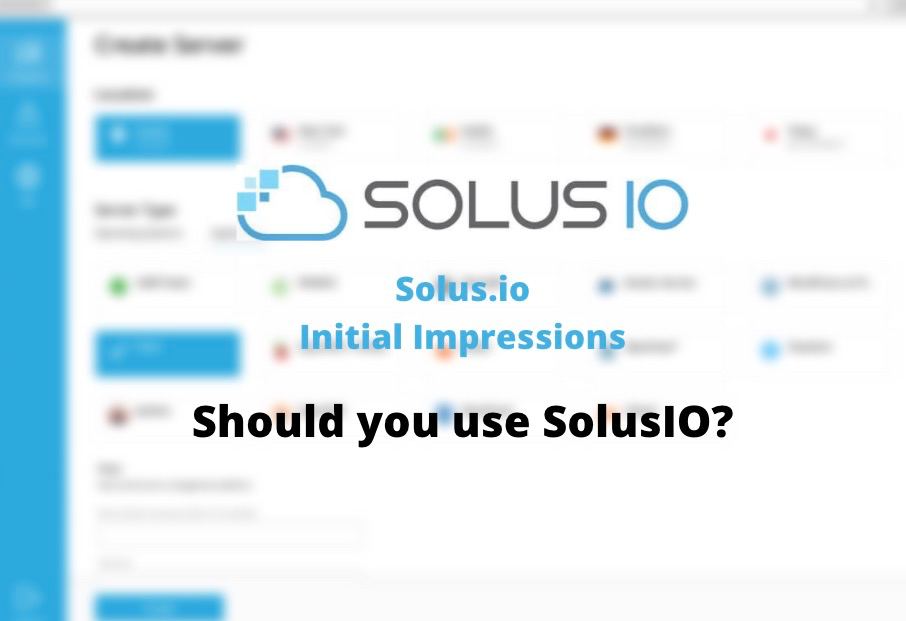This article was written and contributed to the LowEndBox community by Dustin B. Cisneros, CEO of RackNerd. If you are looking for a VPS host, be sure to check out RackNerd’s latest KVM VPS offers here! RackNerd is a resident host here on LowEndBox and is led by an industry veteran, who we recently interviewed. We appreciate all the contributions that RackNerd has provided the community.
You’ve probably heard about SolusIO (https://www.solus.io) by now, if you haven’t – SolusIO is a offspring of SolusVM, and it’s a new, and modern virtual machine control panel that debuted in May 2020. SolusIO is owned by Plesk International GmbH – which is the same parent company that owns SolusVM (https://solusvm.com). You might be asking yourself, is SolusIO going to replace SolusVM? Well, the answer to that, according to the source, is that SolusVM will continue to be an independent brand, and at this time there are no plans from Plesk to discontinue support or lifecycle for SolusVM. Active, albeit subtle development updates are continuing to be made to SolusVM.
I recently decided to deep dive into SolusIO and see what the hype was about, and completed the SolusIO Professional Course on Plesk University. If you are interested in completing the free course, among other courses and certifications you can gain, be sure to sign up for Plesk University here! After completing the course, I have some thoughts and differences to share with you today.
By the way – a fellow provider, OPLink, who is active on the LowEndTalk forum, recently also shared a post stating they will be utilizing SolusIO’s platform. It’s certainly refreshing to see some providers within the community engage with the new SolusIO platform, as nothing beats real feedback, from real production environments. Join the discussion at LowEndTalk.
Keep reading for more details!
SolusIO runs all of its component services in Docker containers. This approach provides safe service isolation and makes updates easier.
The SolusIO Docker services are segregated into the following sections:
- Nginx
- Influxdb
- API
- Echo
- Cache
- Postgresql
- Rabbitmq
- Agent
- Workers
SolusIO supports CentOS 8 based hypervisors, and supports cloud-init which makes KVM templating easier to deploy.
Based out of KVM virtualization (which is the popular choice among both consumers and hosting providers), SolusIO also supports Applications! What is Applications defined as in SolusIO? Applications are a combination of OS image (think CentOS, Ubuntu, etc), cloud-init scripts, and user defined fields. By default, SolusIO comes with popular applications, such as Plesk, cPanel, Jenkins, and NextCloud. You can manage their visibility (i.e. toggle on/off certain applications), and view their properties as reference when creating your own applications. See below screenshot as an example as to how to create your own predefined application in SolusIO:

In addition, SolusIO supports more storage options for Virtual Machine disks. While competing control panel, Virtualizor by Softaculous, has supported these methods for years, it’s nice to see a Solus product supporting additional storage options, as every use case is different, and no doubt, every systems administrator will have a different preference.
SolusIO supports file based storage methods – RAW and QCOW2. For administrators looking to deploy based upon a LVM based storage method, LVM and ThinLVM are available. Each method has different advantages and disadvantages, see below screenshot from SolusIO which explains the differences:

Similar to SolusVM, SolusIO also provides WHMCS module support in order to provide end users with automated provisioning and VM control features. At this time, HostBill, Blesta, or Ubersmith integration with SolusIO is not available yet.
SolusIO Pricing:
SolusIO’s pricing structure is based upon a per-core licensing model. To be clear, these are hardware CPU cores, and does not include hyperthreaded cores. The cost is $2.50/month per CPU core, and if your hypervisor happens to exceed 64 cores, additional cores beyond that number do not need to be licensed.
As an example… to license a VPS node running based upon an AMD Ryzen 3900X processor (12 Cores, 24 Threads), the cost would be 12 x 2.50 = $30/Month.
As another example, to license a VPS node running upon a Dual Xeon Silver 4214 processor (24 Cores, 48 Threads), the cost would be 24 x 2.50 = $60/Month.
Costs are negotiable, and the above information is based upon the information published on SolusIO’s pricing page at the time this post was written. This is obviously subject to change, so be sure to carefully review.
Summary of SolusIO:
Pros of SolusIO:
- CentOS 8 Hypervisor Support
- Component services run in Docker containers
- Multiple Filesystem and LVM based storage methods
- Cloud-init support
- Applications support
- Snapshots support
- Utilizes rabbitmq for logs
- New and modern UI (User Interface) for both users and administrators
- Improved WHMCS module (compared to SolusVM)
- In active development, with new versions being published at least once per week
Cons of SolusIO:
- Cost is higher than competing control panel Virtualizor by Softaculous, and SolusIO’s sister company SolusVM. SolusIO works on a per-core licensing model whereas Virtualizor/SolusVM provides flat fee monthly licenses per slave at significantly lower costs. That being said, SolusIO may not be suitable for some LowEnd providers, but could be a good fit for managed service providers or value added hosting resellers.
- SolusIO is currently missing the ability to add more than 1 IP address per VM (however, according to LowEndTalk thread, SolusIO’s developers will be rolling out this feature in the near future… probably will already be out by the time this post is published!).
- While plenty of development hours are being put into SolusIO, it is still a product that is in its early development stages and has not undergone the amount of testing, feedback, and real-world usability that a product such as Virtualizor and SolusVM has already received over time.
So, to answer the topic of this post, “should you switch to SolusIO?” or “should you deploy on SolusIO?” – there is no definite yes or no. At the end of the day, every use case is different, and you will need to review the pros and cons and make the best informed decision based upon your business plan and use case. If you’re in the process of evaluating VPS control panels for your business, you can certainly throw SolusIO into the consideration list, among Virtualizor, SolusVM, OnApp, and Proxmox. If you need a second opinion, or if you have any feedback, wish to add additional pros/cons please comment. We’d love to hear about it in the comments section below.
























Thanks for the contribution Dustin, this was very informative.
Hi Jon, no problem! Thanks for having an awesome community.
Love contributing and helping wherever I can.
Fantastic, and very helpful. Thank you for such great help and guidance. You made something impossible possible. Thank you from the bottom of my heart.
Such a Mindblowing Post that You have shared here, This is an amazing superb article Keep Sharing this…
Thanks thanks a lotttttttt!!!!
Hi Dustin,
Great article. I am thinking to give SolusIO a try, but I did not found any screenshot how the user-end VPS management panel will look like. If you tested, then can you share one here?
Thanks.